If unaffiliated independent retailers were small furry animals, you could guarantee there would be thousands of members of the public clamouring to save this endangered species from extinction.
But when it comes to neighbourhood stores, while the vast majority of people say they value them, all too often they spend their money elsewhere. Unaffiliated stores are feeling the pinch more than most and their numbers have plummeted over the last two decades, with many driven out of business by fierce competition.
And the battle between symbol groups for members is intensifying with several new groups, such as Budgens Local, Best-one and Quix being set up in the last year, and signs of more in the pipeline. All the groups are looking to maximise membership because every extra store represents additional financial muscle enhancing the group's ability to squeeze better terms out of suppliers.
So as the number of unaffiliated independents has gone down, there has been a rise in symbol group membership. Those symbol groups which offer marketing support, deals with shopfitters and equipment suppliers, and advice on how to cope with new regulations, appeal to many.
At first sight the latest IGD figures of 7,175 symbol group stores and 34,250 unaffiliated c-stores suggest there is a huge pool of potential recruits for the symbol groups to go after. But the number of unaffiliated stores has halved in the last 20 years and IGD business analyst James Walton says there is no sign of that rate of decline slowing down. In addition many of the remaining stores will not be of sufficent size or standard to be eligible for symbol membership.
The group structure within the UK independent retail market is a complex web of interlinked companies. For example, Irish distribution giant BWG, currently being sold by its parent Pernod Ricard, owns chunks of Spar, Mace in Northern Ireland, Landmark and Key Lekkerland.
Then there is Nisa-Today's, which has two of its own groups, but also has Aberness, Budgens, Costcutter and Londis as members of Nisa's Central Buying Company.
Levels of commitment also vary enormously, from groups where a monthly membership fee is paid and buying and merchandising disciplines must be adhered to, to groups where little more than a fascia is involved.
At one end of that spectrum are the three biggest symbol groups, Spar, Londis and Costcutter. Each has the critical mass to survive in today's cut-throat market and can expect to increase membership from a variety of sources. All three have recently revamped their imagery, with Spar's millennium stores, Londis's Genesis format and Costcutter's updated fascia and are pushing members hard to invest in the new formats.There are marked differences in the way each one operates, however.
Spar is the UK's biggest symbol group with more than 2,600 stores, including 446 owned by its six regional wholesalers, and a brand that has recently been advertised on prime time TV and is recognised nationally and internationally. MD Morton Middleditch draws a distinction between the "full service symbol groups" such as Spar and Londis, and the "delivery fascia groups". He says: "Our appeal will be to independents who want to develop a business rather than have a fascia to market themselves."
Three years ago Middleditch committed Spar to adding 750 stores to its membership within five years, warning that there was a limited universe of stores to recruit from and Spar had to make the effort before it was too late.
Middleditch says independents are an important source of new members. "The first thing we want to do is judge the viability of a store. There is no point in taking on retailers if there is no market out there. What we are looking for is potential. We are seeing growth from forecourts, and the CTN sector is another area with potential where we can offer a range of solutions."
Spar is also involved in Prince Charles' rural stores initiative and Middleditch says it is considering how it might provide a service there.
Unlike Spar, Londis, which has 2,147 stores, literally belongs to its members, with each having a single share in the company. It has its own distribution network and is a member of Nisa mainly for overriders.
Sales director Terry Bedford disagrees with Middleditch about the number of potential recruits available. He says: "We have a database of 12,500 stores in England, Wales and Scotland as far north as Inverness which match our criteria for membership." He says new recruits come from both the cash and carry and symbol sector.
One of the group's best recruitment tools, he says, is its new Genesis format. Londis has examples of this new format operating in all of its 26 sales territories. Bedford says retailers who have to deal with salesmen on a daily basis are often sceptical when someone tries to interest them in membership. "But they do listen when it's another retailer talking, and we rely on testimonials a lot," he adds.
Costcutter's prime point of difference, according to chairman Colin Graves, is the low cost of its operation. Unlike the other symbol groups, it does not have the costs associated with running a wholesale operation deliveries to its members are fulfilled by Nisa and this allows it to supply its members at the lowest cost, he says.
He points out that Costcutter has grown to an 1,100 store group since its formation 15 years ago and says there is nothing to indicate that its rate of growth will slow.
Another potential winner in the symbol sector, which could develop into a major competitor for the big three for members at the top end of the market, is Budgens Local, according to Graves. Budgens Local is unique among the groups in that it is an extension of a multiple supermarket brand. It was launched just over a year ago and currently only 24 stores have joined, but Graves points out that the biggest shareholder in Budgens is Musgrave, a very successful supplier to SuperValu Stores in Ireland.
While the other major symbol groups have prospered, Mace has suffered a steep decline in recent years, at least in England and Wales. The successful separate Mace operation in Northern Ireland has been widely admired, and Aberness runs Mace in Scotland (see Scotland panel), but the chaos that engulfed the group in England and Wales in the late 1990s, towards the end of its ownership by Booker, looked terminal. And when P&H McLane bought the operation in 1999, even its respected wholesale business found the situation almost impossible to sort out.
"Mace will become a regional player in Scotland and Ireland only," predicts Middleditch. Graves also questions whether P&H can halt the long-term decline.
But P&H marketing manager Andy Stickland says Mace has turned the corner in terms of membership since P&H bought it from Booker in 1999. And the Mace Express symbol, launched in May, has just signed up its 57th member.
P&H also operates two other symbol groups, Supershop, for CTN based retailers, and the more convenience oriented Your Store. Supershop, set up in 1996, was developing well and was chosen by the newsagents' federation as the preferred group for its members. However, this also suffered a recent setback when the NFRN terminated the deal after setting up its own symbol group and teaming up with the online delivered wholesaler Blueheath (see Quix panel).
"Working in a dwindling pool of unaffiliated retailers, many already P&H customers, it is our task to encourage those who have the necessary drive and ambition to succeed to select from P&H the symbol format that suits them best. We have the answers and the experience right across the board to back them up," says Stickland.
P&H is a formidable delivered wholesaler with 12,000 independent customers and major supply deals with oil companies. In the last year it has restructured its team to give its symbol side a greater retail focus. But it remains to be seen whether, even with its resources, it can prosper as a symbol operator.
A symbol group that could lack critical mass is Key Lekkerland's 220-store Key Shop and 120-store Key Store. While the company grew its delivered business strongly under its recently departed chief executive David Rae, its symbol arm has not kept pace. Even the injection of retail know-how introduced when Irish giant BWG took over several of Key Lekkerland's leading wholesale companies does not appear to have made the critical difference. And now the involvement of BWG has led to uncertainty, as its parent company Pernod Ricard is in the final stages of selling it.
One of the most complex groups in the independent sector is Nisa-Today's. As a buying group Nisa has a number of competing members, and it also operates its own symbol group under the Nisa banner. Like the big three symbol groups, it has recently modernised its imagery, and this has been adopted by 120 stores so far, but it delivers to 2,700 stores in total, including Costcutter's members.
With the huge buying power of Nisa-Today's providing keen prices for its members, and a strong support package including marketing, own label, IT and category management, Nisa's offering is one that will appeal to the unaffiliated retailer, and it is assured of growth in the future.
Another group option for retailers is offered by Today's, the wholesale arm of Nisa-Today's. There are 620 Day Today fascias and its members are offered a range of support services and drop shipment.
With all the symbol groups eating into the customer base of the cash and carry groups, the C&Cs have responded with fascias of their own in an attempt to tie in their customers. Some cynics wrote off these groups after a disastrous initiative in the last decade with the Happy Shopper fascia. In a dash for growth, its owner Nurdin & Peacock did not exercise sufficient control over the quality of stores allowed to have the fascia, and if a group is only as good as its weakest store, then that group was very poor indeed. But lessons have been learned from that episode and most cash and carrys are more careful about who they allow to display their retail brand.
Bestway is a cash and carry group which offers both a fascia and a symbol-like option. About 650 stores have its Best-in fascia, providing them with an identity and own label, but there is also Best-one, which includes delivery of stock, which Bestway describes as a "partnership group". Retail development manager James Hall says it differs from a symbol group because "retailers share data and commit to good store standards and in return we do not levy the odious costs that traditional symbol groups bear on the members enabling them to further invest in their stores."
After its launch last year, Best-one has had a slow take-up, with 30 stores so far, but Hall says it will have 50 by Christmas. Bestway is a formidably successful cash and carry operator, but it is too early to tell whether Best-one will be similarly successful, although the lack of fees has captured a lot of interest among retailers.
Bestway is a member of the Landmark Cash and Carry buying group, which also has its own LifeStyle fascia. There are 1,500 stores with the fascia, but there is a lack of focus differences in the way members operate it such as whether they deliver or not which suggests much tighter control will be needed if the group is to grow.
While many groups stress the importance of their brand and adhering to disciplines, Booker takes a lighter approach with the 630 stores in its Premier group. Trading director Shaun Birrell stresses: "Premier is all about make-over not takeover. In other words, the independent retailers who join us get to keep their independence.
"Because we recognise that they're entrepreneurs who want and deserve to be in control of their own businesses, we don't dictate how they should operate, but rather work with them in partnership.
"They get to enjoy a complete fascia makeover and internal re-merchandising, with the fascia emphasising the retailer's name as opposed to the Premier brand."
Premier and Booker have formidable financial clout as part of Iceland Group, but Booker has been rocked by a succession of crises since 1998 and there is still a question mark over the direction of the business.
With so many groups vying for retailers, it seems inevitable the independent sector will follow the example of the major multiples, with the smaller players being squeezed out or swallowed up by their bigger competitors. Some symbol operators also suggest that the move towards symbol groups will diminish the market for cash and carries, but Bestway trading director Younus Sheikh disagrees. "Cash and carries will always have a role to play. Even retailers who receive regular deliveries need and do continue to top up from their local C&C for bits and bobs.
"They treat it like an extended store room popping down to it from time to time as and when they need stock outside of a regular delivery schedule.
"Don't forget there is also the social aspect of the C&C a place for fellow retailers to meet and talk."
There is no doubt that more and more retailers are looking to groups for support, and while retailers are notoriously cost conscious customers, it could be that they will follow a trend set by consumers.
If symbol groups can provide a service that provides retailers with extra convenience reducing the burden of running a store then retailers may be willing to pay a small premium for that convenience. n
{{FEATURES }}
Close menu
- Home
- Retail & Wholesale
-
Products & Suppliers
- Back to parent navigation item
- Products & Suppliers
-
Product Categories:
- Back to parent navigation item
- Product Categories:
- Alcoholic drinks
- Bakery
- Cereals & breakfast
- Cheese
- Chicken & poultry
- Chocolate
- Confectionery
- Crisps, nuts & snacks
- Dairy
- Fish
- Fresh produce
- Frozen
- Household
- Meat
- Own Label
- Sauces & condiments
- Seasonal
- Soft drinks
- Vaping
- Vegan & plant-based
- World foods
- Suppliers
- People
- Reports & Data
-
Topics A-Z
- Back to parent navigation item
- Topics A-Z
-
Popular topics:
- Back to parent navigation item
- Popular topics:
- Cost of living crisis
- Crime
- Deposit Return Schemes
- Finance
- Government & Regulation
- Health
- Inflation
- Loyalty
- Marketing
- Mergers & Acquisitions
- New Product Development
- Sourcing
- Supply chain
- Sustainability & environment
- Technology
- Ultra Processed Foods
- Vaping
- A-Z all topics
- Content by type:
- Events
- Ask iA (beta)
- Subscribe now
Sign in to comment on this article
Not logged in before? Register for FREE guest access today.
You will be able to:
- Read more stories
- Receive daily newsletters
- Comment on stories
Advert



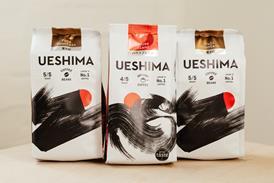
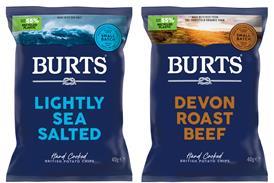






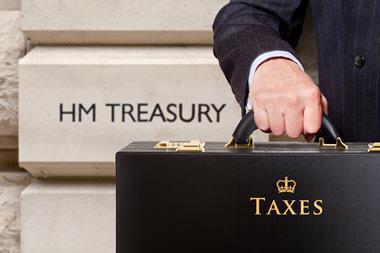

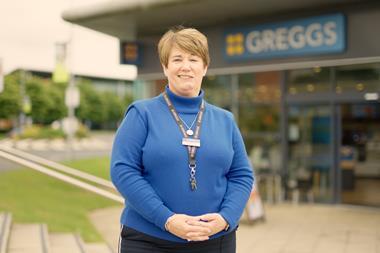

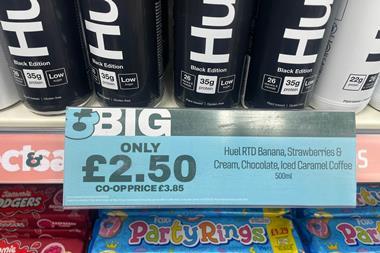

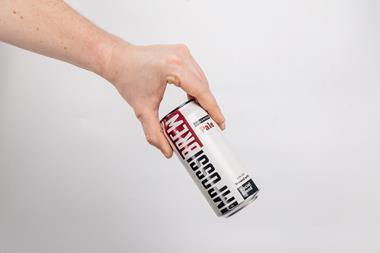

No comments yet